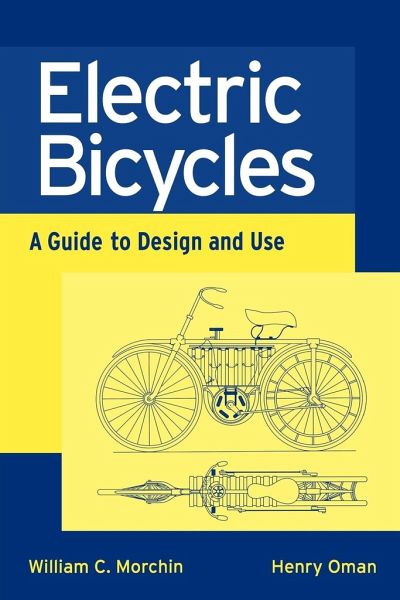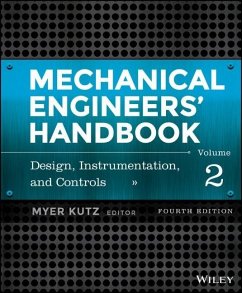
Electric Bicycles
A Guide to Design and Use
Versandkostenfrei!
Versandfertig in über 4 Wochen
69,99 €
inkl. MwSt.

PAYBACK Punkte
35 °P sammeln!
Among others, Build a Battery-Powered Electric Bicycle serves the amateur craftsman who chooses to build their own. From how to choose the components, to how to put them together for a finished home built bicycle conversion, the authors give commentary and specific data for future modifications to improve performance.
It is also useful to the purchaser of a factory built electric bicycle to understand the capabilities of his purchase and to judge to worthiness of his brand-new bike. The description, performance, and cost of over 45 commercial electric-powered bicycles is included. The authors include test results of sample configurations they have built, with component-cost ranges from under $100 to over $600. These features are also attractive to the amateur craftsman and mechanical engineers.
It is also useful to the purchaser of a factory built electric bicycle to understand the capabilities of his purchase and to judge to worthiness of his brand-new bike. The description, performance, and cost of over 45 commercial electric-powered bicycles is included. The authors include test results of sample configurations they have built, with component-cost ranges from under $100 to over $600. These features are also attractive to the amateur craftsman and mechanical engineers.
Design or build a battery-powered electric bicycle
For much of the world, bicycles are a transportation mainstay. Electric bicycles--powered by a rechargeable battery pack--are proven to deliver the highest possible energy efficiency, even compared to pedal bikes. A transportation alternative to fossil fuels, electric bicycles are fast catching on, in part because they don't require factory assembly. End-users can easily construct them with available components.
The text reveals important techniques, data, and examples that allow readers to judge various propulsion setups--used in both home- and factory-made bikes--and estimate speed and travel distance for each. Numerous charts clearly present the costs, benefits, and trade-offs between both commercial and user-converted models.
Key features include:
_ Estimating motor-performance for wind, hill, and cruising power requirements
_ Estimating battery capacity and a thorough description of battery charging
_ Motor and motor-control options
_ Evaluating motor-to-wheel coupling options
_ Placement of propulsion components
_ Configurations and performance
_ How systems-engineering techniques can produce electric-bicycle designs that have long travel range and low life-cycle cost
_ Testing
_ Developments to watch
A comprehensive resource for harnessing innovation, Electric Bicycles is the definitive practical guide to taking full advantage of this exciting alternative energy technology.
For much of the world, bicycles are a transportation mainstay. Electric bicycles--powered by a rechargeable battery pack--are proven to deliver the highest possible energy efficiency, even compared to pedal bikes. A transportation alternative to fossil fuels, electric bicycles are fast catching on, in part because they don't require factory assembly. End-users can easily construct them with available components.
The text reveals important techniques, data, and examples that allow readers to judge various propulsion setups--used in both home- and factory-made bikes--and estimate speed and travel distance for each. Numerous charts clearly present the costs, benefits, and trade-offs between both commercial and user-converted models.
Key features include:
_ Estimating motor-performance for wind, hill, and cruising power requirements
_ Estimating battery capacity and a thorough description of battery charging
_ Motor and motor-control options
_ Evaluating motor-to-wheel coupling options
_ Placement of propulsion components
_ Configurations and performance
_ How systems-engineering techniques can produce electric-bicycle designs that have long travel range and low life-cycle cost
_ Testing
_ Developments to watch
A comprehensive resource for harnessing innovation, Electric Bicycles is the definitive practical guide to taking full advantage of this exciting alternative energy technology.












